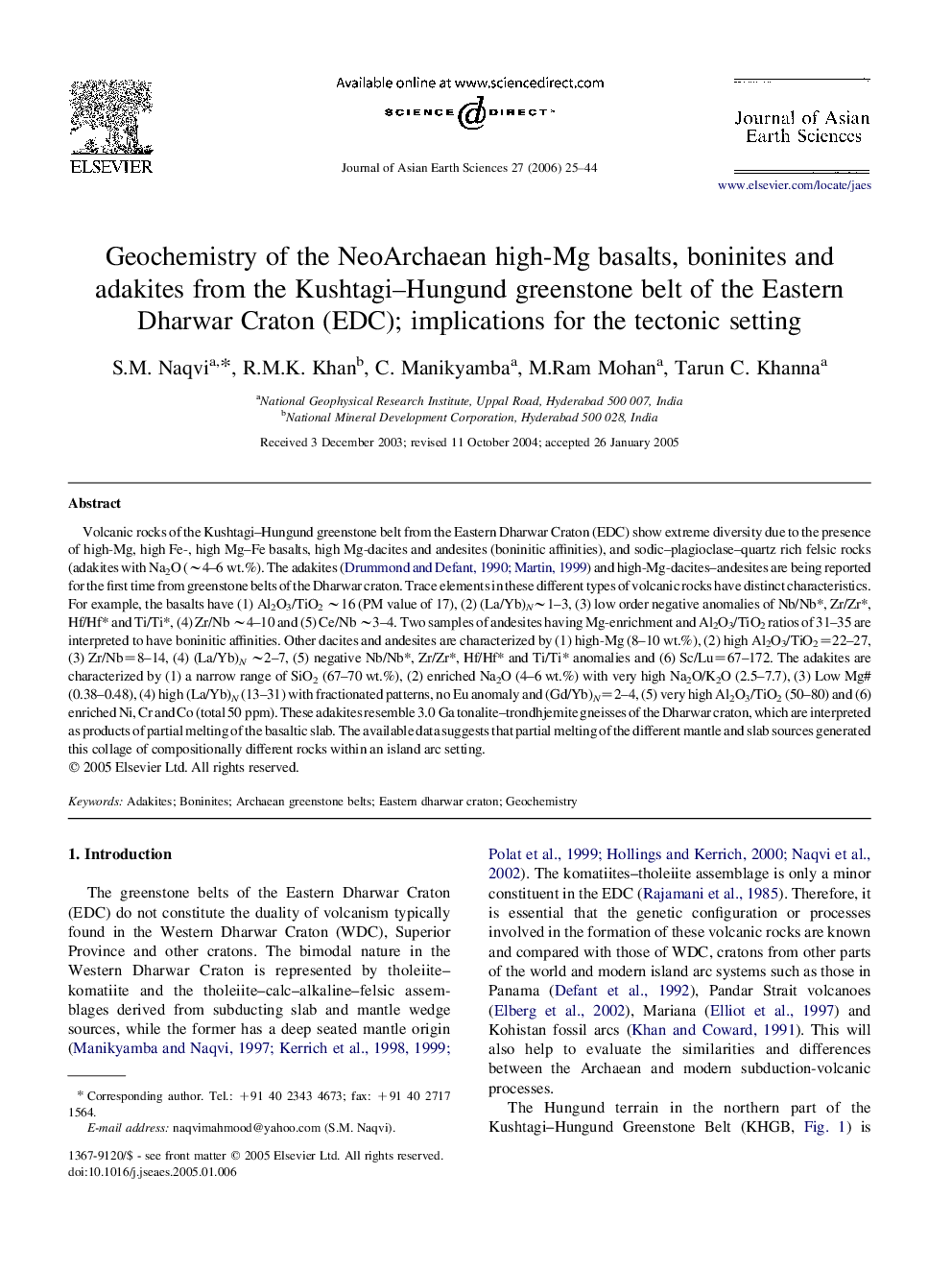| کد مقاله | کد نشریه | سال انتشار | مقاله انگلیسی | نسخه تمام متن |
|---|---|---|---|---|
| 4732699 | 1356884 | 2006 | 20 صفحه PDF | دانلود رایگان |

Volcanic rocks of the Kushtagi–Hungund greenstone belt from the Eastern Dharwar Craton (EDC) show extreme diversity due to the presence of high-Mg, high Fe-, high Mg–Fe basalts, high Mg-dacites and andesites (boninitic affinities), and sodic–plagioclase–quartz rich felsic rocks (adakites with Na2O (∼4–6 wt.%). The adakites (Drummond and Defant, 1990 and Martin, 1999) and high-Mg-dacites–andesites are being reported for the first time from greenstone belts of the Dharwar craton. Trace elements in these different types of volcanic rocks have distinct characteristics. For example, the basalts have (1) Al2O3/TiO2 ∼16 (PM value of 17), (2) (La/Yb)N∼1–3, (3) low order negative anomalies of Nb/Nb*, Zr/Zr*, Hf/Hf* and Ti/Ti*, (4) Zr/Nb ∼4–10 and (5) Ce/Nb ∼3–4. Two samples of andesites having Mg-enrichment and Al2O3/TiO2 ratios of 31–35 are interpreted to have boninitic affinities. Other dacites and andesites are characterized by (1) high-Mg (8–10 wt.%), (2) high Al2O3/TiO2=22–27, (3) Zr/Nb=8–14, (4) (La/Yb)N ∼2–7, (5) negative Nb/Nb*, Zr/Zr*, Hf/Hf* and Ti/Ti* anomalies and (6) Sc/Lu=67–172. The adakites are characterized by (1) a narrow range of SiO2 (67–70 wt.%), (2) enriched Na2O (4–6 wt.%) with very high Na2O/K2O (2.5–7.7), (3) Low Mg# (0.38–0.48), (4) high (La/Yb)N (13–31) with fractionated patterns, no Eu anomaly and (Gd/Yb)N=2–4, (5) very high Al2O3/TiO2 (50–80) and (6) enriched Ni, Cr and Co (total 50 ppm). These adakites resemble 3.0 Ga tonalite–trondhjemite gneisses of the Dharwar craton, which are interpreted as products of partial melting of the basaltic slab. The available data suggests that partial melting of the different mantle and slab sources generated this collage of compositionally different rocks within an island arc setting.
Journal: Journal of Asian Earth Sciences - Volume 27, Issue 1, June 2006, Pages 25–44